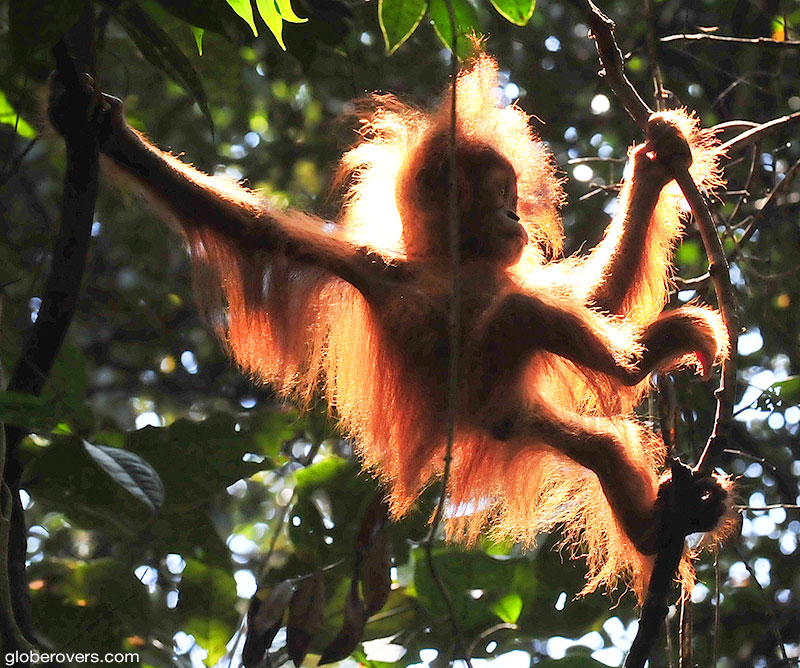
Orangutans are currently only found in the rainforests of Borneo (an island to the east of Malaysia and south of China) and the Indonesian island of Sumatra. Since 1996, the apes were classified into two species: the Bornean orangutan (P. pygmaeus, with three subspecies) and the Sumatran orangutan (P. abelii).
However, after a detailed phylogenetic study, in November 2017 scientists declared a third species, the Tapanuli orangutan (P. tapanuliensis). Restricted to South Tapanuli in the southern part of North Sumatra, this species resembles the Sumatran orangutans more than Bornean orangutans in both body build and fur colour.
All three species are classed as critically endangered.
The Sumatran Orangutan
Located in the north of Indonesia’s Sumatra Island, the Gunung Leuser National Park has a total area size of about 7,927 km² – straddling the border of North Sumatra and Aceh provinces. The park is named after Mount Leuser (3,119 m) and protects a wide range of ecosystems, including the orangutans.
Most travellers to the park head to the more touristy Bukit Lawang village by the Bohorok River, from where they hire a guide and enter the park. However, the Aceh section of the park has slipped under the tourist radar for years, and still does not get many visitors. The park offers a real jungle experience so come well prepared!
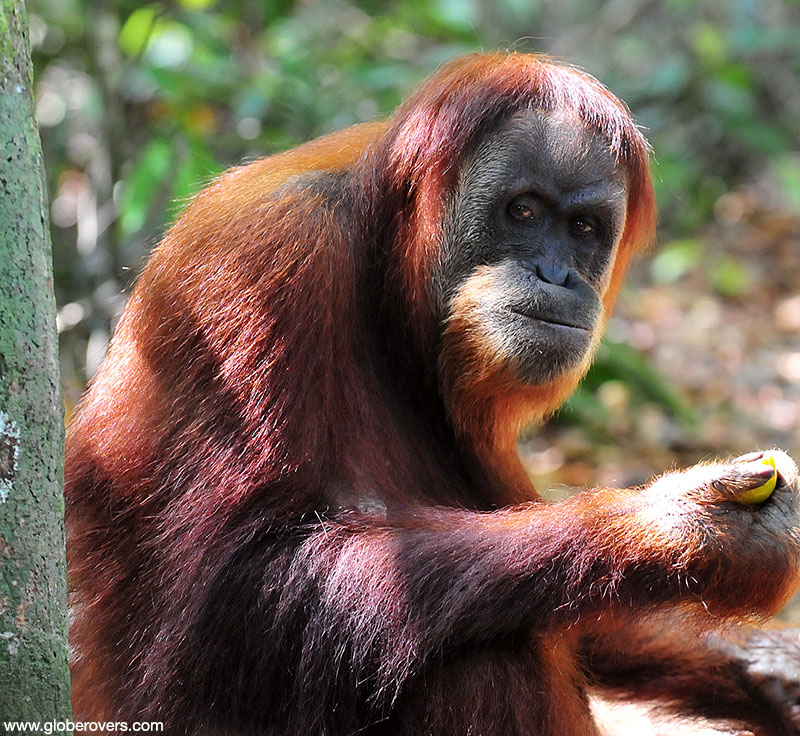
While the orangutan sanctuary is located inside the park close to the village of Bukit Lawang, the best way to see the orangutan is to take a 2 or 4-day hike with a local guide and porter. Pay a higher guide-fee to be in a private group of 1 or 2 persons which is better than a small group of 5 or 6. Your guide and porter will take care of the tent, and most likely a live chicken for dinner.
In addition to the orangutans, watch out for many species of monkeys, gibbons, Sumatran elephant, Sumatran tiger, Sumatran rhinoceros, leopard cats and deer.
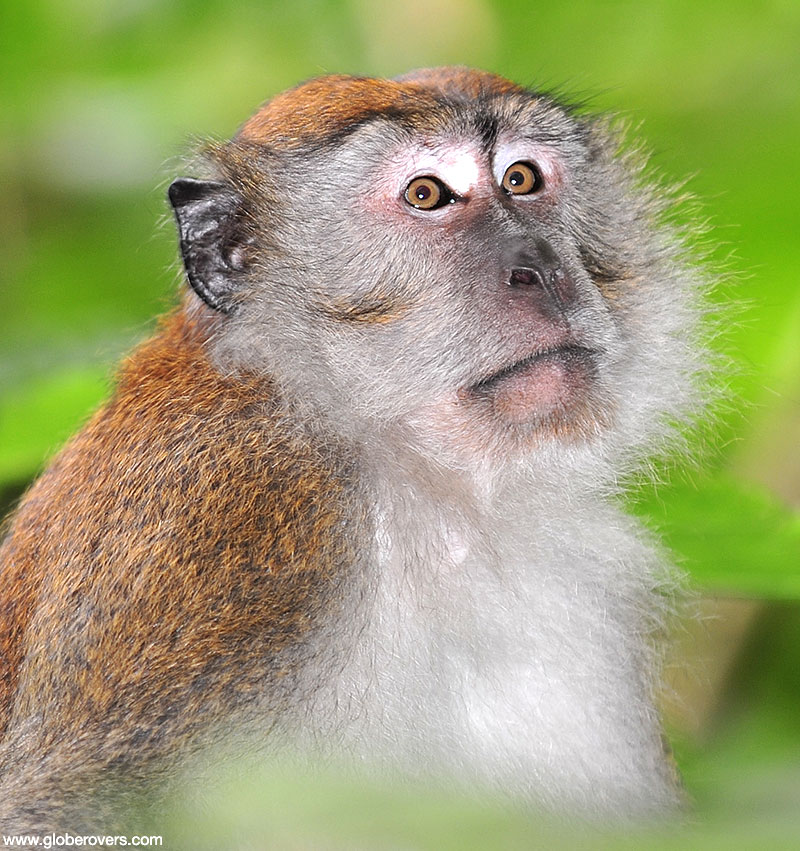
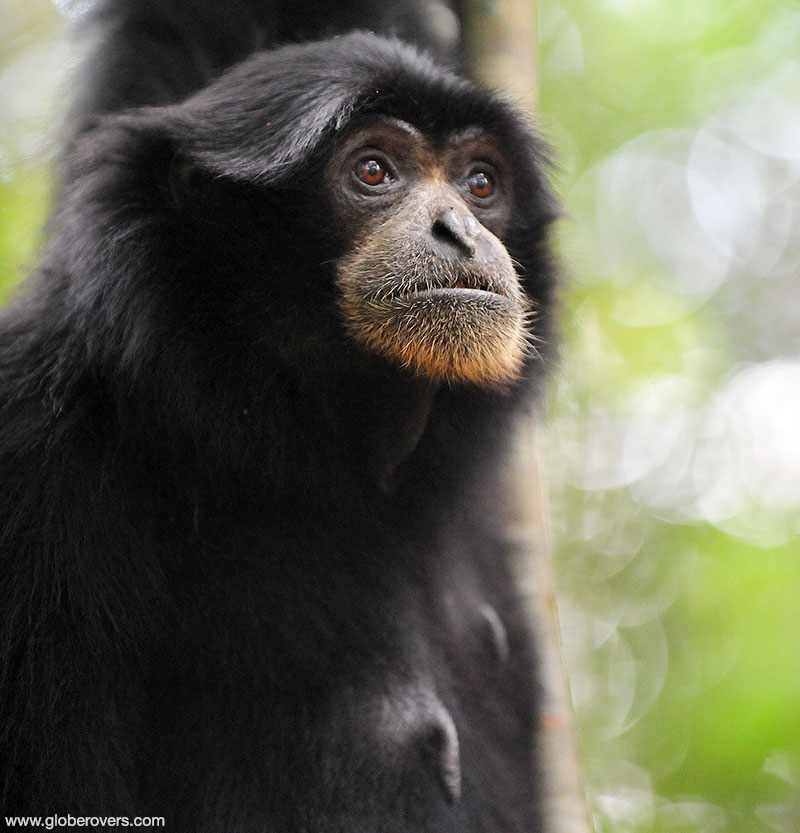
A strong word of advice: Do not allow your guide to
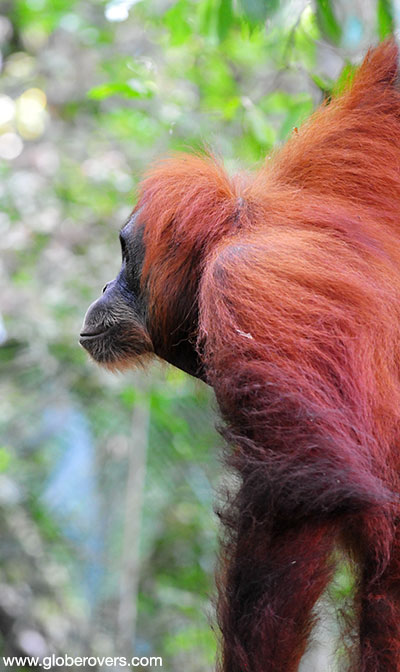

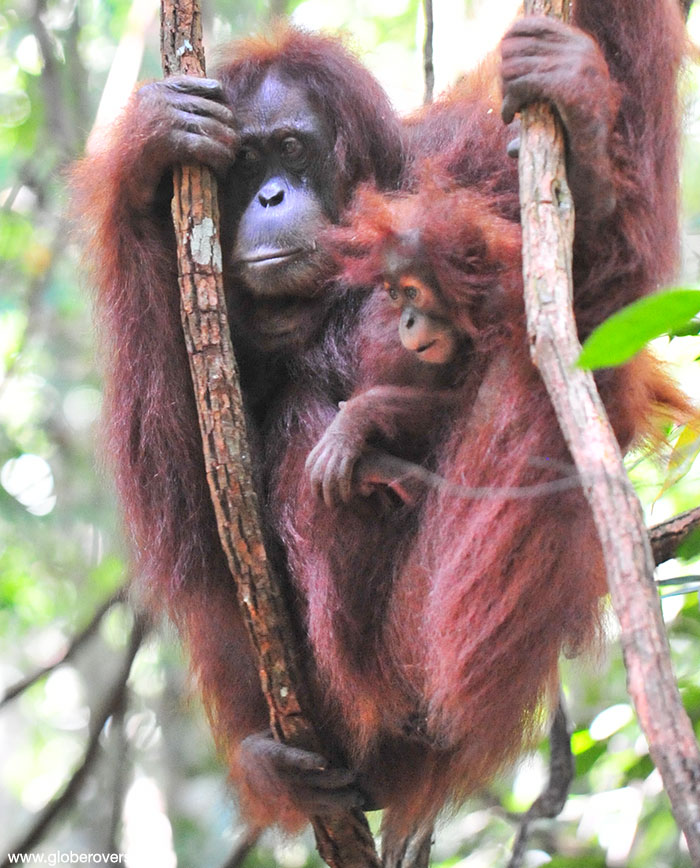
After the hike, stay in one of many guesthouses in the village of Bukit Lawang along the Bohorok River. Keep in mind that a terrible flash-flood hit this village on 2 November 2003 obliterating about 400 houses, 3 mosques, 8 bridges, about 300 kiosks and food stalls, and 35 hotels and guesthouses.
Reportedly 239 people, including 5 tourists, were killed. The disaster was attributed to illegal logging. Most rains fall between mid-November and January so be careful if you visit during this time – which is not an ideal time to explore the jungle.
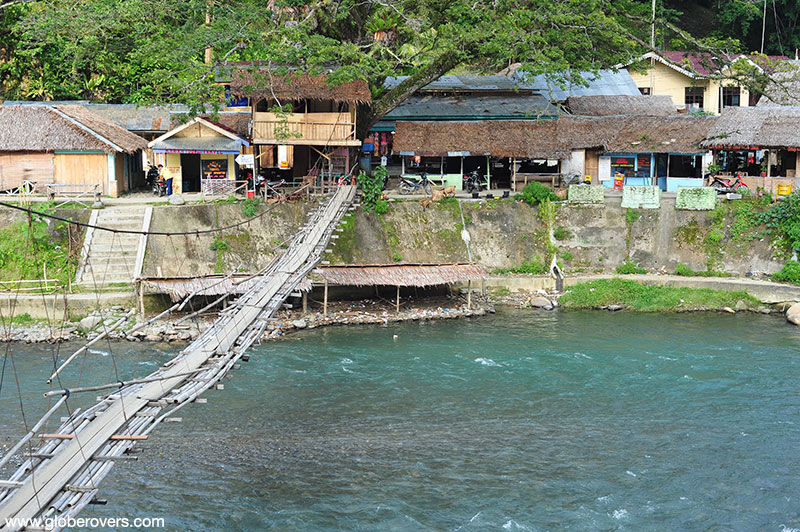
GETTING HERE:
Public mini-buses leave from Pinang Baris bus station in Medan for the 2 to 3-hour trip up north. While tourist minibuses are significantly more expensive and less frequent, it is faster and more convenient. If money is not an issue, hire a car and driver.
The Bornean Orangutan
Native to the island of Borneo, the Bornean orangutan is a bit larger than the Sumatran orangutan from the Indonesian island of Sumatra.
The best place in Borneo to have a close-up of these magnificent primates is the Sepilok Orangutan Rehabilitation Centre near Sandakan town in the northeast of the island. However, a more authentic way to see them is to hire a guide and travel by canoe up and down the rivers and do some jungle hiking. They are scared of humans so it takes some effort to get close to them. Bring your long lenses to get good shots.
☛ Read more: Mosques of Borneo Island
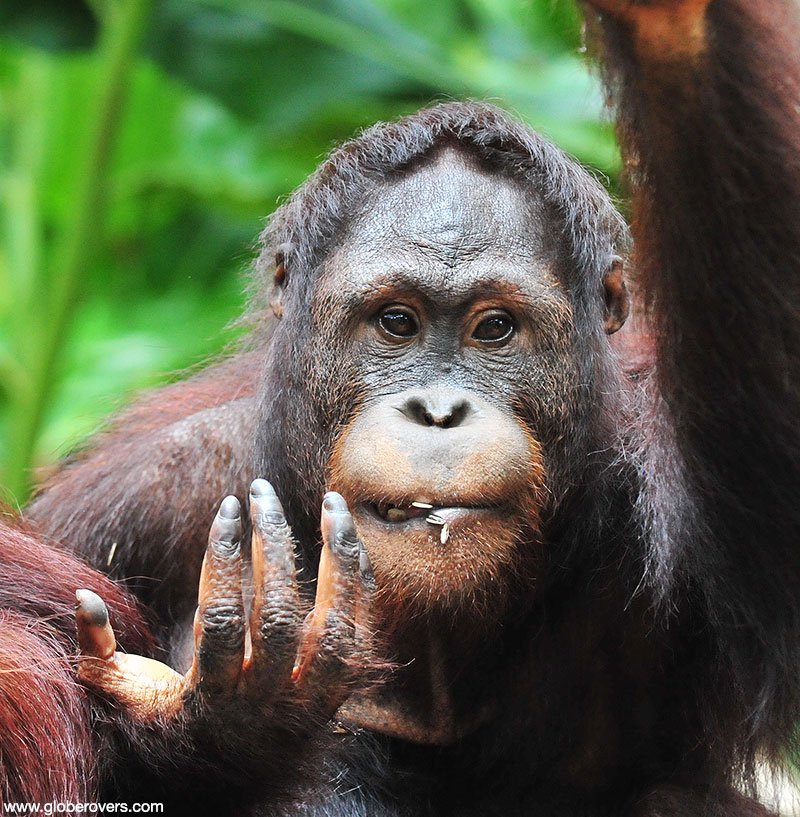
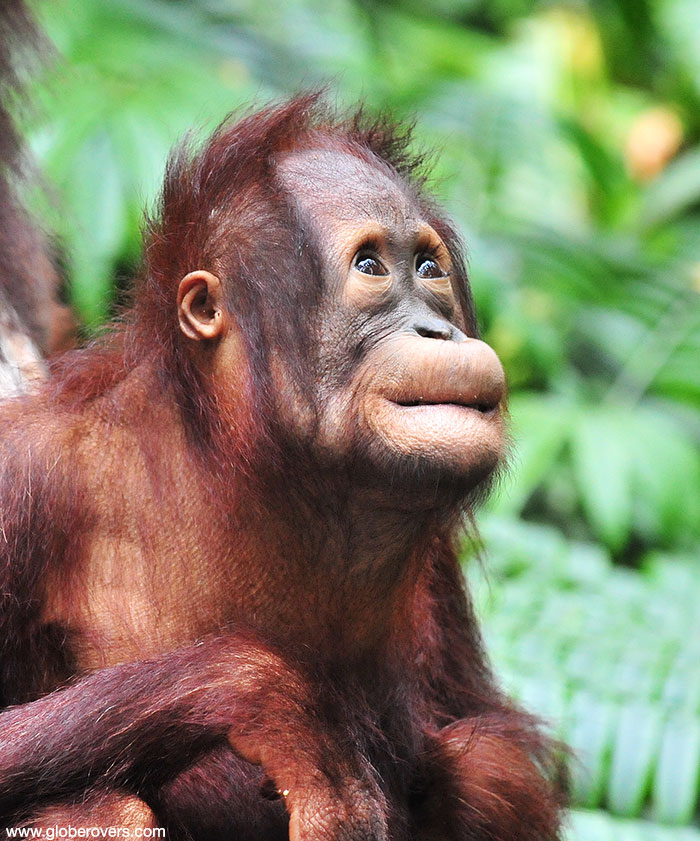
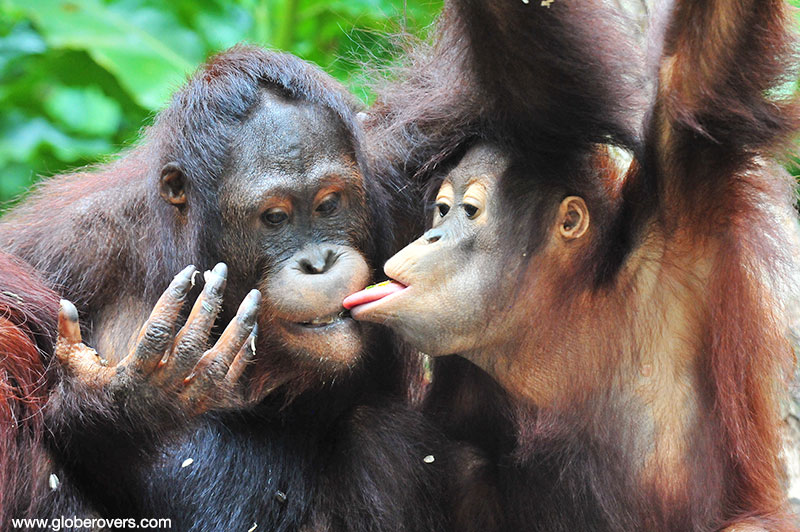
GETTING HERE:
Fly into Sandakan in northeastern Borneo Island. Take a local taxi to town and stay at a comfortable guesthouse, preferably out of town. Arrange a car and driver to the entrance of the Rehabilitation Centre. Also, arrange a day trip with canoe up and down the rivers. Do the river trip before visiting the Rehabilitation Centre.
☛ Read more: 10 Great Travel Experiences in Indonesia
More of Indonesia:



Blog post and photos by Peter who has been travelling almost full-time since 2005 and has been to over 122 countries. He visited several countries, such as Japan, more than 20 times. Peter is Editor-in-Chief and Publisher of GlobeRovers Magazine, an independent travel magazine focused on intrepid destinations.
